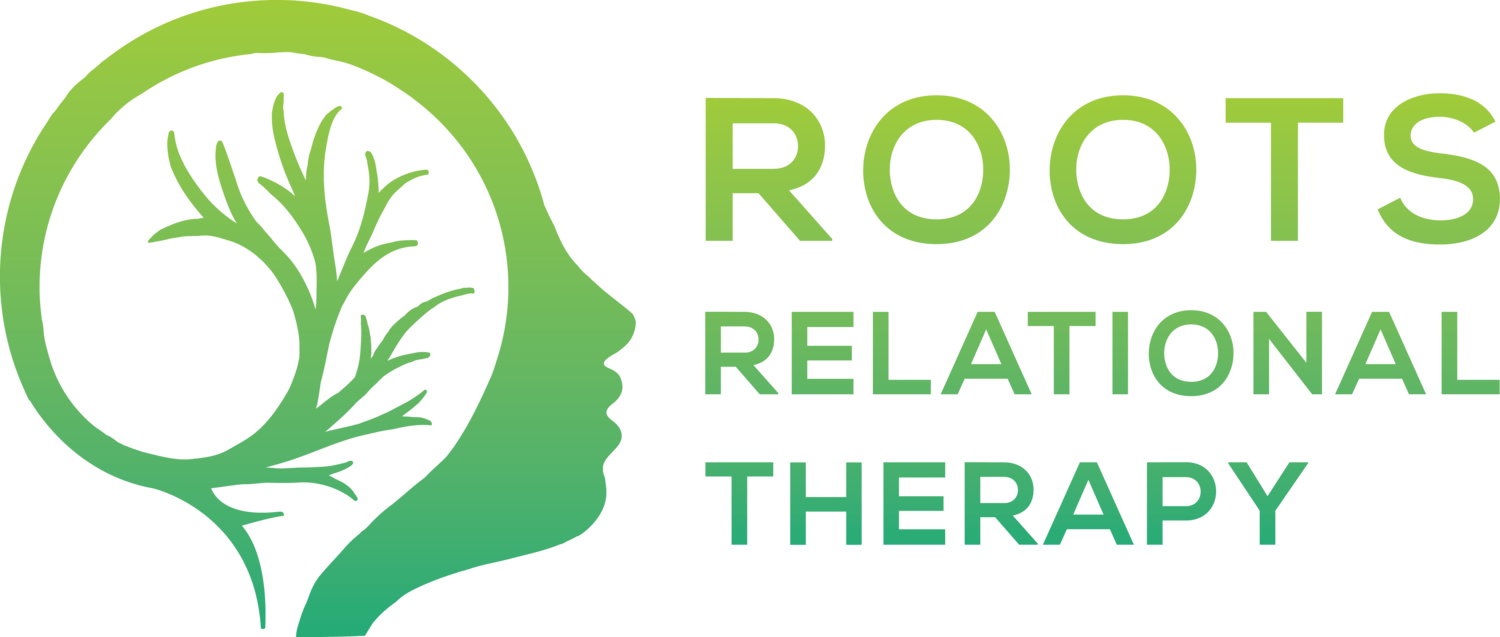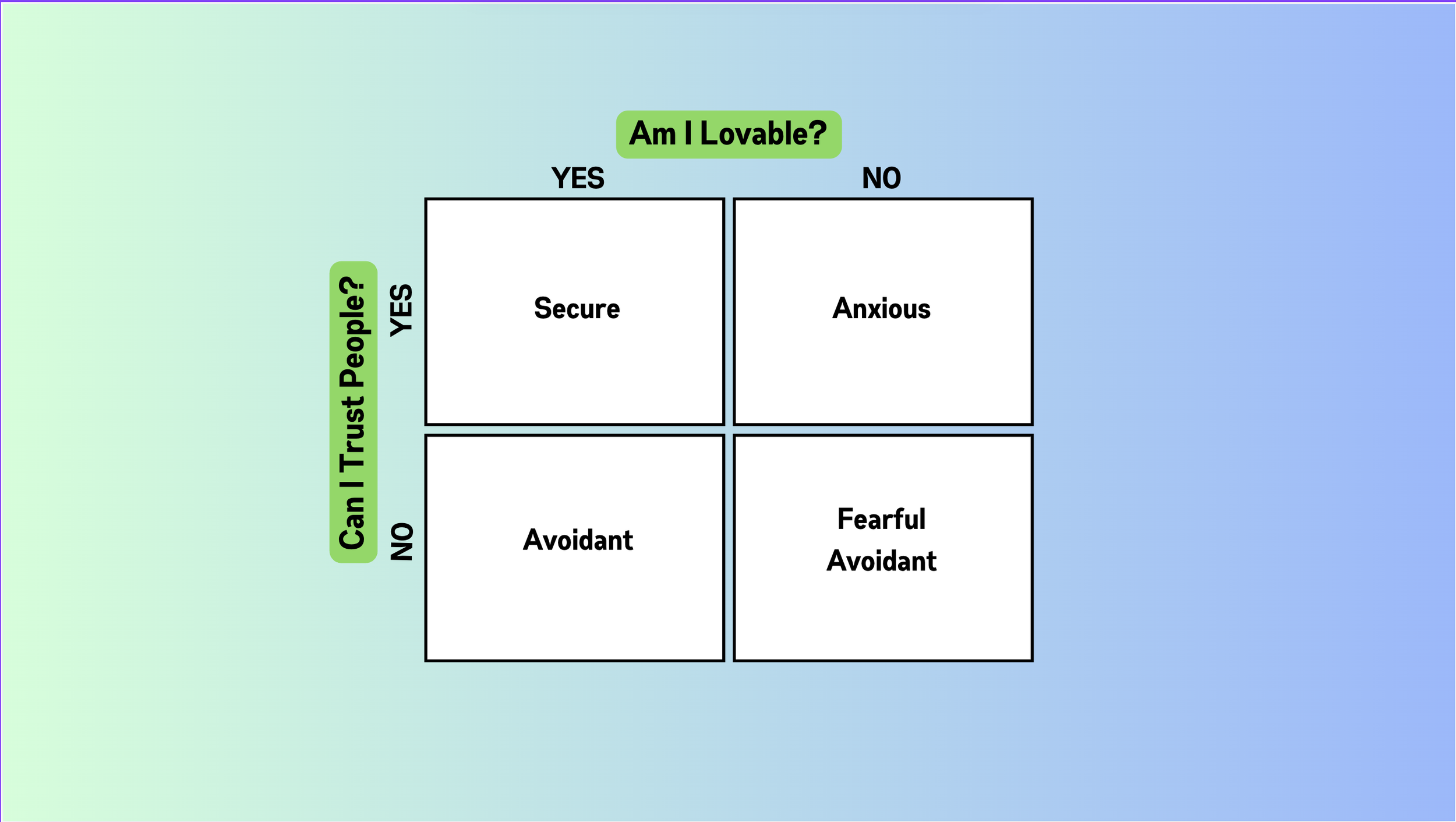Simple Attachment Style Assessment
Have you ever been confused as to why someone says or does something that pushes you away? Where you can’t quite tell if they’re just having a bad day, if it’s a part of their personality, an insecurity that got stepped on, or if they’re trying to give you subtle hints without being direct? Perhaps you’re confused as to why you say and do things that end up harming your relationships.
Understanding attachment styles is like having Google translate! Behaviors that seemed confusing, counterproductive or self-sabotaging begin to make sense within the context of our attachment style. Having a simple, functional understanding of the styles of attachment will help you date wiser, manage conflict better, and have healthy, long-lasting relationships.
The Simplest Assessment of Attachment
Attachment styles boil down to how we answer two basic questions: “Am I lovable?” and “Can I trust people?”
When asking, “Am I lovable?”, we are assessing whether a person: 1) believes they’re worthy of love, 2) believes they are not difficult to love, and 3) believes they’re not at a heightened risk of rejection based on their life experience.
When asking “Can I trust people?”, we are assessing whether a person expects to be lied to, betrayed, taken advantage of, or manipulated by people close to them.
However, each question has a theoretical answer, meaning what we think, and a behavioral answer, which is our pattern within relationships. For example, people may easily say, “Yes, I believe I’m lovable!” However, they have a pattern of feeling frequently insecure in relationships, regardless of how trustworthy their partner is.
When assessing your answers, take a second to think back to behavioral patterns within your relationships to cross-check your theoretical answer with reality.
Using the graph above, you can easily decipher your own attachment style, as well as decode the attachment styles of others you’ve had experience with.
A person in the secure category believes they are lovable and are willing to risk connecting with a partner. People who are securely attached present themselves as having a positive self-esteem, and aren’t concerned about being abandoned or smothered by their partner.
A person in the anxious category doesn’t feel lovable deep-down, but is attached to their partner enough to be willing to risk connection. People who are anxiously attached constantly crave intimacy and affirmation to get the reassurance of being lovable that they don’t inherently feel within themselves.
A person in the avoidant category believes they are lovable, but are unwilling to risk connection. People who are avoidantly attached view intimacy as a loss of independence, and view connection as a liability more than a resource.
A person in the fearful/avoidant category is highly traumatized, where they both feel unlovable and are unwilling to risk connection. People who are combination fearful/avoidant can present in different ways, but overall have a negative self-image and really struggle with trust.
Application of Results
Now that you know your attachment style, you have a better understanding of your individual needs within a relationship. As you’re dating, or reflecting on the relationship you’re already in, pay attention to how this person makes you feel.
Different people and their attachment styles can affect us differently. Do they make you feel more secure, or less secure? Do they agitate your attachment style in a negative way; such as making you more anxious or more avoidant?
Understanding the root of your attachment insecurity, whether it comes from feeling unlovable or difficulty with trust, will help you better communicate what you’re feeling and what you need in relational conflict. For example, anxiously attached individuals need verbal and behavioral confirmation that they are “chosen”, a priority, and not be put in situations where they have to question whether or not they are loved. For avoidant individuals, they need verbal and behavioral confirmation that their partner is secure enough to allow them space and time alone in their own interests, and be satisfied with a level of intimacy that they are comfortable with.
A common problematic match is an anxiously attached person, and an avoidantly attached person. Neither one will ever feel secure, compatible, or happy in a long-term relationship together. Rather, they will prove their negative beliefs correct and agitate each other’s protective mechanisms.
The avoidant person becomes more diligent in keeping their distance, and the anxious person feels more rejected and unlovable so they cling more. Objectively speaking, it seems obvious that they would be a bad match. Ironically, an anxious and avoidant couple often struggle to breakup because there’s a sense of comfort in their inner negative beliefs being validated.
Someone with anxious attachment needs a lot of reassurance and consistent intimacy to feel more secure. So an avoidant, a long-distance relationship, a situationship, or someone who is away a lot would be very harmful for them.
Someone with avoidant attachment needs space and independence to feel secure. So a long-distance relationship, situationship, or someone who is away a lot would be great for them. As well as a person with separate interests or a large social support with family, friends or community.
Someone with fearful/avoidant attachment needs therapy and healing before seeking success in relationships. However, extremely anxious and avoidant attached individuals may also benefit from therapy in learning healthy emotional regulation and communication skills. Couples therapy is deeply rooted in attachment, and may help couples understand and support each other better.
Where Can I Find More Help?
If you’re looking for a place to process attachment wounds and learn healthy relationship skills, therapy can be a great resource for you! You can start by clicking the button below to schedule a free 15-minute phone consultation with me, and see if we’d be a good fit!
Maybe you aren’t fully ready for therapy yet — That’s okay too! Click the button below to check-out my YouTube Channel, Tips from a Therapist, where I offer some of my best tips on how to improve your relationship with yourself and other people. Once you get to my channel, click Subscribe!
If you found this helpful, share it with a friend!
The more you know, the more you grow!

